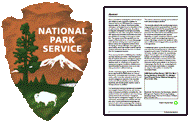United States National Park Service

United States National Park Service: Publications
Date of this Version
2003
Citation
National Center for Cultural Resources National Park Service, Washington, DC (2003)
Abstract
Public archeology in the United States received a long-sought and hard won legislative boost for antiquities protection in 1906. On June 8, 1906, a federal law, an Act for the Preservation of American Antiquities (16 U. S. C. 431-433) was signed into law by President Theodore Roosevelt after several arduous decades of dedicated attention to the issue. Better known as the Antiquities Act, its enactment responded to a growing concern over the issues of looting and vandalism of American archeological resources. Proponents of the Act's passage intended to provide appropriate mechanisms to halt the plundering of antiquities and destruction of archeological sites, which was pronounced in the southwestern United States. Additionally, supporters envisioned a statute to shelter irreplaceable archeological deposits, ancient architectural ruins, and natural resources from destruction or pillage by homesteaders, curious tourists, and pothunters increasingly known to frequent the American West (Lee 1970/2001; Rothman 1989: 12; Thompson 2000a).
The Antiquities Act initiated a federal system and infrastructure to protect American antiquities on public land, regulate public archeological activities, and punish malefactors known to have disturbed ancient sites and ruins. By declaring antiquities, scientific objects, and places as public sources of education, scientific information, and/or commemorative value, the Antiquities Act established fundamental policies for the treatment of cultural resources that influenced archeology and historic preservation throughout the twentieth century (McManamon 1996, 2001). The law empowered the President to establish protected reserves of public land, referred to as national monuments, by simple proclamation without congressional action. Additionally, it regulated all excavations, investigations, or removals of objects of antiquity from public land. Potential investigators were required to apply for and be issued a permit that validated their studies. Supporters hoped the passage of antiquities protection legislation would provide a mechanism through which the Federal government could prosecute and punish those who violated the Act's provisions.
This study explores two aspects of the Antiquities Act’s impact on public archeology between the Act’s passage and 1935. The first is a consideration of the many administrative developments within the Department of the Interior required to implement the Act. During this twenty-eight year period, the Department of the Interior developed a permit system for the review and issuance of applications; the National Park Service was created; new functions, such as the Department Archeologist, were established; and other challenges that arose were addressed. Secondly, this survey explores some of the projects undertaken by the earliest Antiquities Act permit recipients, and discusses some of the troubles that plagued field and federal archeologists throughout the initial third of the twentieth century.

